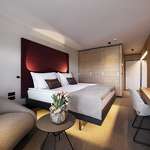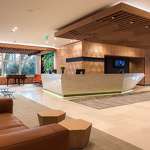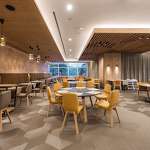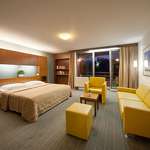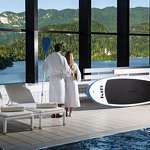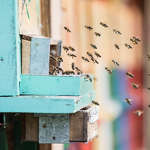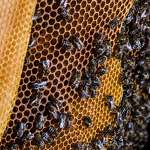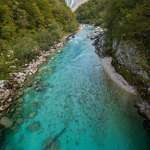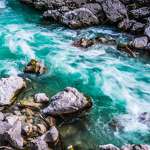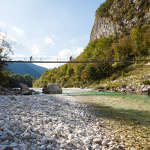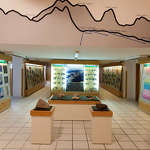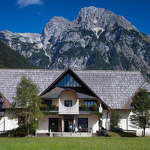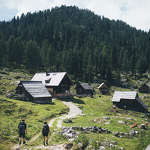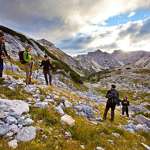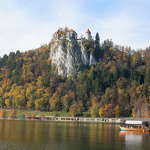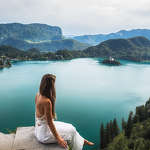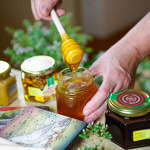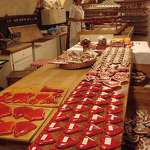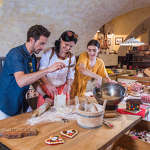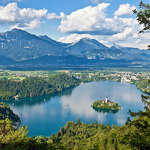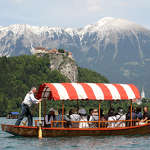
The Bees and the Mountains
The Gorenjska region is an outstandingly picturesque part of Slovenia. The Alps with their steep peaks and wild rivers make the region feel like an unconquerable landscape, while folk tradition and ethnological heritage provide a colourful glimpse into the way of life in the past. The gems of Slovenia that are recognised all around the world and include the Soča River, the town of Bled and the amazing natural scenery are the best invitation to come and enjoy a few wonderful days. Nature and folk tradition come together to show you places that you will be hard pressed to find anywhere else on the globe.
OVERVIEW
DAY 1:
You will learn about bees at the Vesela čebela apiary where you will be presented with an entire family of bees in colourful hives from behind a glass wall. You will have the opportunity to see from up close how hardworking, orderly and highly organised the Carniolan honey bees actually are. They will also show you how they work with bees and the way to live sustainably in symbiosis with the bees in the modern world. The Soča River is a natural gem of Slovenia. Its beds and the emerald blue stream are a magnificent backdrop for photographs. You will have the opportunity to see it up close while you walk a portion of the Soča Trail that connects the calm, mysterious parts of the Soča River and the Trenta Valley. You can choose the length of the walk freely, with the longest option featuring eight kilometres of inspiration. You will be rewarded by a well-earned lunch afterwards. This will be followed by the visit to the Trenta Museum presenting the natural special features of the only natural park in Slovenia and the rich ethnological heritage of the Trenta Valley. You will be taking numerous beautiful photographs and have the chance to see the source of the river that is one of the most beautiful in the world. The trail will require a dash of courage and care but the reward is the magnificent view of the turquoise subterranean lake. If you come in the spring when the snow melts on the peaks between Jalovec and Mojstrovke mountains that charge the source of the Soča River, the scene will certainly be a rather watery one, while the water level in the summer will allow you to descend into the cave and see the source from up close. You will then drive to Bled. The Vršič pass is full of switchbacks and mesmerising vistas across Alpine valleys. You will have the chance to gather your impressions of the day at dinner at Bled.
DAY 2:
Bled is a true Alpine jewel. Its lake and the health resort tradition have put it on the map of the most adorable destinations centuries ago. You will see the town from the beautiful Bled Castle. More than a thousand years have passed since 10 April 1004 when the German king Henry II gifted the Bled estate to the Brixen Bishop Albuin and his bishopric in the Italian Trento as a way of thanking him for the strengthening of German authority in this part of northern Italy. The view of the lake is breathtaking. The castle also houses a castle apiary where you will be able to taste and purchase the best of what Slovenian apiculture has to offer. However, it is not only the bees and honey that put Slovenia on the apiculture map. Many products are based on honey. Our grandfathers and grandmothers once showed their appreciation to one another by giving each other gingerbread hearts. You will learn about these at the Gingerbread Museum in Radovljica where they will greet you for lunch, after which you will be able to make your very own gingerbread heart at their workshop. The procedure for making the hearts is a lengthy one – taking a week if we consider each and every stage of production. The presentation of the procedure is very interesting as it is the old, traditional method of making gingerbread, and the girls wear the traditional national costume from the second half of the 18th century. The manufacture of gingerbread takes the visitors back to a time when things happened slowly and the master craftsmen were esteemed artists who preserved folk tradition. You are certain to become a connoisseur of Slovenian folk traditions.
PACKAGE PRICE PER PERSON
- Individually, with own transport: from 229 €
- VIP package with a guide and transportation: from 328 €
- Group trip: from 269 €
THE ADVENTURE/PACKAGE INCLUDES
- Visit to the local beekeeper
- Visit to the Trenta Museum
- Visit to the Soca spring
- Sightseeing in Metlika
- Visit to the Bled Castle
- Visit to the Lectar Museum
- Workshop for making gingerbread
- 2 x lunch in the selected restaurant
- 1 x dinner
- 1 x overnight stay with breakfast at the hotel ****
For more information about trips and activities click here.
ADDITIONAL INFORMATION
- the program is available and runs from 1 April to 31 October, arrivals are possible every day of the week
- the program is intended for individual passengers, groups of 2–7 persons and larger groups for which the program can be adapted
- possibility to combine two or more packages
- tourist tax is included in the price
Hotel Rikli Balance ****S
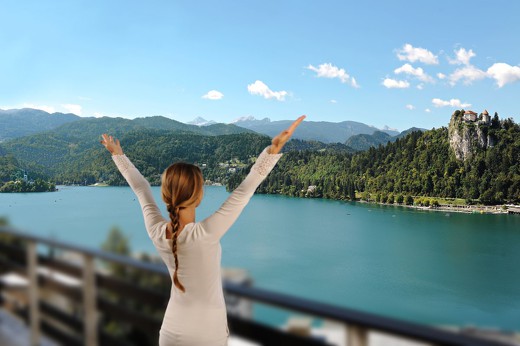
Rikli Balance Hotel (former Hotel Golf) is situated on a small hill offering magnificent views of Lake Bled and the Bled Castle. It is 150 m from the centre of Bled while Lake Bled is 300 m from the hotel.
Rikli Balance Hotel is reviving the traditions of the local environment through its sustainable orientation and care for the health and wellbeing of its guests. The hotel was renovated in 2018 (lobby, lobby bar, restaurant and hallways) to bring back the healing concept of Arnold Rikli who founded a natural health resort here at Bled as early as in the 19th century. He relied on elements of Bled's natural environment to make people feel better, i.e. air, water and sun. He encouraged plenty of exercise in fresh air, moderate and high-quality vegetarian diet, and invigorating sleep. You can follow the Rikli health programme while staying at the Rikli Balance Hotel. Living according to Rikli means getting up before sunrise, drinking fresh Bled water on an empty stomach, walking barefoot on the Rikli barefoot trail, enjoying light meals, swimming, sunbathing and walking in the fresh Alpine air.
Schoolchildren and toddlers will also not be bored here because they will entertained by the mascot Zaki the Swan whose imagination never runs out at creative workshops with the children. The Živa Wellness operates within the hotel and offers treatments that have been adapted to the Rikli healing methods. Water fun is a sure thing when you visit the thermal swimming pools on two levels connected with a water slide, the outdoor swimming pool and children's swimming pool.
We offer 150 rooms that have been renovated in 2017. The rooms tell the story of the Carniolan honey bee (Apis mellifera carnica), traditional Gorenjska needlework, the gingerbread heart, the spruce from the nearby Pokljuka and the story of Arnold Rikli. All rooms have a balcony, air conditioning, LCD TV, mini bar and free WiFi.
The self-service restaurant prepares local and traditional dishes characteristic of the Gorenjska region, while dishes for guests with special dietary needs are available by special order. After dinner, you must make sure to try the famous Bled cream cake.
Hotel Park ****
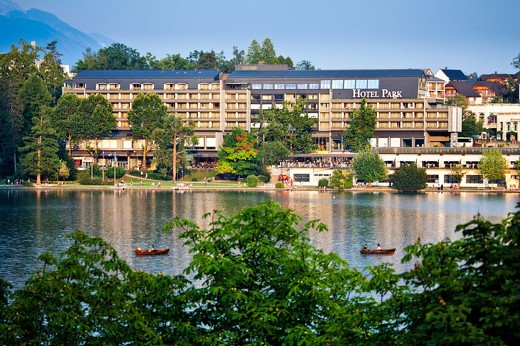
Hotel Park is located in the centre of Bled and offers views of Lake Bled framed by the Julian Alps in the background.
The hotel boasts the cyclist and hiker-friendly hotel certificate and is especially suited for guests who like to be active on their vacation. The diverse surroundings offer multiple options for spending one's time in the embrace of nature, and guests can also practice their swing at the Bled golf course. Children are encouraged to come to the mini club and have fun with the mascot, Zaki the Swan, at the Savica Garni hotel. Did you know that this is the home of the original Bled cream cake – a dessert that is known far and wide, and that the chef of the Hotel Park restaurant made the first one more than 60 years ago? And did you also know that more than 10 million of these cakes have been baked since then? Try the original dessert and do something that every visitor must do during their visit to Bled.
They have also not forgotten about relaxation – the nature here will make you feel the true meaning of calm, the hotel swimming pool will relax you and you can enjoy watery pleasures if you pay the surcharge at the Živa Wellness of the Rikli Balance Hotel. Swim into the heated water of the swimming pool and go down the water slide with the kids or take the time to enjoy the whirlpool while the kids splash around in the pool. You can also visit one of the saunas to warm and relax your body. Let the warm sun's rays greet you gently at the outdoor swimming pool or relax and get a tan at the terrace.
There are 217 rooms, all of which have a balcony, air conditioning, LCD TV, mini bar and free WiFi.
The hotel restaurant offers self-service meals, while dishes for guests with special dietary needs are available by special order.
Happy beehive
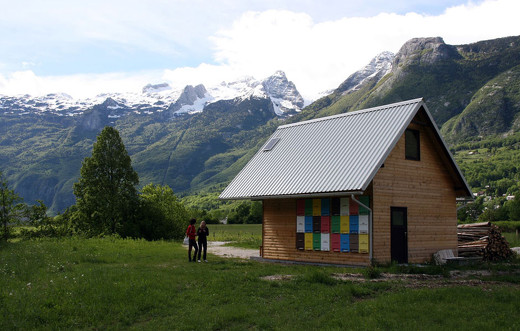
In the Happy beehive, you will see a whole family of colourful hives behind the glass barrier. Carniolan honey bees are very diligent, orderly and highly organised, and you can safely have a look at them up close. They will present you the course of work with bees and a sustainable living with bees in the modern world.
The Soča River
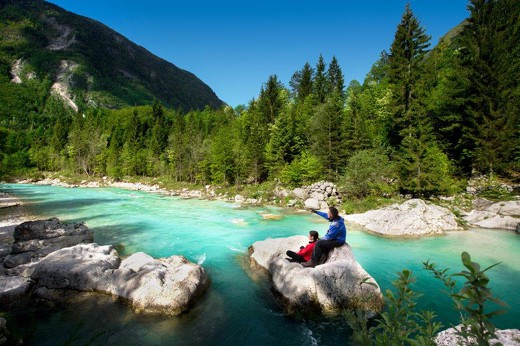
In 1879, Simon Gregorčič, a Slovenian poet, wrote a wonderful hymn to the Soča River, which is known as one of the most beautiful rivers in Europe. It is known for its beautiful emerald colour and hence its second name, the Emerald River.
The source of the Soča is the most beautiful karstic spring in the Julian Alps. It is in the Triglav National Park under the steep Trenta slopes of the Velika Dnina. The spring soon flows into a 15 m high waterfall, from here Soča continues its way towards the valley, initially as a smaller stream, and later as an increasingly powerful river.
There is a well-arranged path to the source, for all those who would like to see this gem of nature close by.
The Emerald River runs along the Trenta valley to the Bovec Basin, travels around Kobarid, visits Tolmin and arrives to the Most na Soči, then continues the path along a narrow gorge to Solkan, at Gorizia enters the Friuli Valley in Italy, and after its 137 km flows into the Trieste Bay of the Adriatic Sea.
On its long journey, also some of the larger affluents join the river, such as Koritnica, Učja, Tolminka, Idrijca and Vipava.
The special natural attractions of the Soča River are Velika korita (great river beds), Mala Korita (small beds) and the Korita (beds) of Soča River at Kršovec, which are truly worth seeing. We should also not forget the famous endemic Soča trout. It attracts many fans of sport fishing every year.
In addition to its beauty, the emerald river also has an interesting history. It has experienced everything, such as the passage of Napoleon's troops and the Battles of the Isonzo - the battles between the Austro-Hungarian and Italian armies in World War I.
Today, the Soča is a real attraction for visitors and offers many development opportunities in tourism for the inhabitants. The Soča is a real paradise for enthusiasts of water sports and for those who want to relax and enjoy nature. Posočje is visited by kayakers, hikers, nature lovers, photographers and, finally, adrenaline lovers. One of the most popular sports activities is rafting on the Soča River.
There are also more and more various competitions and festivals organised there. In 2007, Disney filmed the scenes on the emerald river for the film The Chronicles of Narnia: Prince Caspian.
Soča is the true gem of Slovenia, which always excites!
Soča Trail
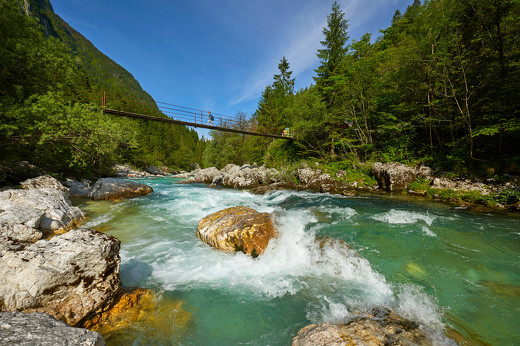
The Soča Trail is a park trail leading along the Soča river from its source to Bovec. It connects peaceful, mysterious parts of the Soča river and the Trenta valley.
A special feature of the Soča Trail are the picturesque hanging bridges. Walking along the Soča Trail and visiting the Trenta Information Center, you will find a thrilling experience of the Triglav National Park.
The trail runs along a non-demanding terrain and is 25 km long in full. You can adjust the direction and length of the walked path to your time and purpose. In the summer months, there is a public bus service between Bovec and Kranjska Gora.
Alpe Adria Trail is an attractive hiking trail of three countries, Austria, Slovenia and Italy, which begins on the Pasterze Glacier under Grosglockner Glacier, and ends on the Adriatic coast. It passes through the Carinthian lakes, through the valley of the Soča River and towards the wine-growing Brda and then through the Karst to the sea at the Milje (Italian Muggia) near Trieste. The path is approx. 640 km long and is divided into 37 hiking stages. The Soča Trail is for many the most beautiful part of the entire Alpe Adria route.
The Trenta Museum
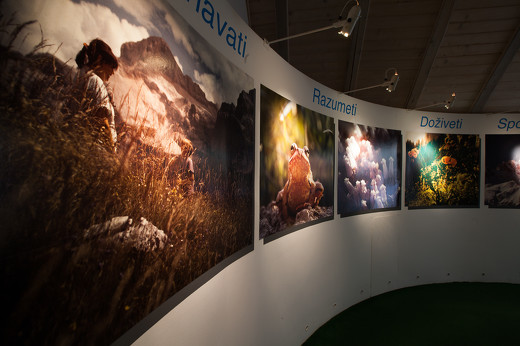
The Trenta Museum and the Information Center of the Triglav National Park represent the cultural landscape, nature and past life in Trenta.
The Trenta Lodge is the center of the cultural and social life of the Trenta valley, a venue for many events (concerts, theatre, puppet shows, exhibitions, seminars, business meetings ...).
Trenta Lodge in Log in Trenta welcomes all visitors who wish to learn about the national feature of the Triglav National Park, its flora, fauna, culture, geology, geomorphology and hydrology. The Trenta Museum represents the life of the former Trenta, a rich collection of ethnological, cultural and historical heritage of the Trenta valley.
A reconstruction of a Trenta house with its black kitchen shows how people in this area once lived. Several items from history used by mountaineering pioneers during their expeditions are also on display.
Photos of the famous Trenta mountain guides and rich literature in this area attract the nostalgia of not so ancient times, interesting are also the Trent Bell and the eternal story about the mysterious Zlatorog.
Contents of the Trenta Lodge and the Trenta Museum: ethnology, culture and the history of Trenta, mountaineering heritage, multimedia presentation of the natural features of the Triglav National Park, 8-screen video installation created by Andrej Zdravič on the underwater world of the Soča in four seasons: Mysteries of the Soča – Time Horizon, installation: Forest - Time Triptych (on the forests of the Julian Alps, Trenta and Pokljuka).
Triglav National Park
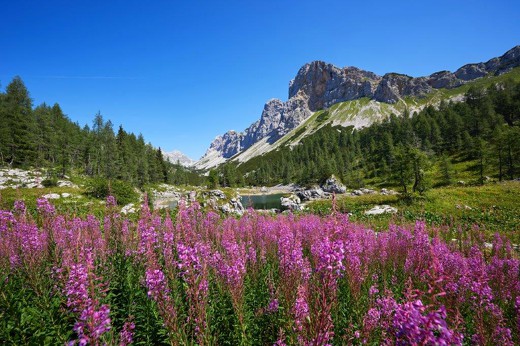
Triglav National Park is the only national park in Slovenia. It got its name after Mount Triglav, which is the highest peak in the heart of the park (2864 m) and is also the highest Slovenian peak.
The Triglav National Park extends on the north-west of Slovenia along the border with Italy and close to the border with Austria, on the south-eastern part of the Alpine massif. It almost completely overlaps with the Eastern Julian Alps.
It covers 840 square kilometres, which is four percent of the surface of Slovenia. It belongs to the oldest European parks; the first protection dates to 1924, when the Alpine Park was established.
As a unique protected area in the Alpine world, the Triglav National Park is primarily intended to preserve ecosystems and natural processes, natural values, diversity of habitat types, animal and plant species and the quality and diversity of landscapes.
In the inhabited parts of the national park, the emphasis is on preserving the cultural heritage and the quality of the cultural landscape, which is a result of the long-standing coexistence of the locals and nature. With the support of the relevant government departments, residents are provided with economic and social conditions for the sustainable development of activities that enable and support the preservation of settlement, a quality living and working environment, a characteristic identity and the traditional use of natural resources.
Preservation of nature and cultural heritage, sustainable development and communication with the general public are the challenges and tasks of the Public Institution Triglav National Park, which brings local people and visitors closer to the importance of the protection of nature and cultural heritage and sustainable development in the Alps through active cooperation.
The National Park is an exemplary case of successful coordination of various interests aimed at the same goal - preserved nature, landscape and cultural heritage. The values of the national park are a motive and an attractive destination for visitors who respect the exceptional nature and cultural heritage and peace and quiet. Through various forms of sustainable mobility and organised park infrastructure, visitors are directed to less vulnerable areas of the national park, where they are offered the opportunities to experience nature and to relax.
The Source of the Soča River

One of the most beautiful karst springs in the Julian Alps accumulates water in the area of Jalovec, Šit, Travnik and Mojstrovka. The river comes out from a cave with a subterranean lake, through a narrow gorge, which soon spreads.
According to legend, the gods Triglav, Jalovec and Mangrt once lived in Trenta. When an evil water spirit that flooded villages by spewing water made his way to Trenta, the gods decided to capture him and bind him in the valley. They left his mouth open just enough to irrigate the valley. Once his punishment is over, he will be released and the Soča will dry up.
Bled Castle
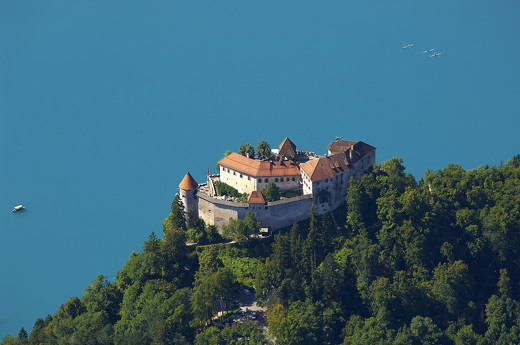
Bled castle - according to written sources the oldest castle in Slovenia, with the grant first mentioned in 1011 as castellum Veldes, lies on a mighty steep rock rising 130 m above the glacier Lake Bled, and stands as a symbol of Bled and Slovenia. The image of the castle above the lake with a romantic island and church is the Bled characteristic, which has become recognisable throughout the centuries at home and abroad. From the view terraces of the castle there is a wonderful view of the lake with the island, you can see Lesce and Radovljica on the palm of your hand, and the mountains of the Karavanke and the Julian Alps.
More than a thousand years ago, on 10 April 1004, in the Italian Trento, German King Henrik II. awarded the estate Bled in Carniola to Bishop Albuin of Brixen. In 1011, the emperor Henrik II, awarded, with a new title deed, also the Castle on the cliff (castellum Veldes), to Adalberon, the Albuin's successor; the castle is mentioned for the first time in preserved written sources. The Bled Castle was the administrative centre of the Brixen land property in Upper Carniola. In medieval sources, the name of Bled is mentioned in German form Veldes. The Bled castle is according to the time of mentioning the oldest castle in Slovenia. Castle buildings are arranged along the lower and upper courtyards.
The beauties of the town of Bled and the castle were spread by the famous travellers, among them also Janez Vajkard Valvasor in The Glory of the Duchy of Carniola (Slava Vojvodine Kranjske) from 1689.
With its favourable strategic position, Bled was an important venue in all periods of history for the diplomatic and protocol meetings at the highest level. Many of the most prominent statesmen visited the Bled Castle and enjoyed the unique view of the surrounding beauties.
Castle beehive
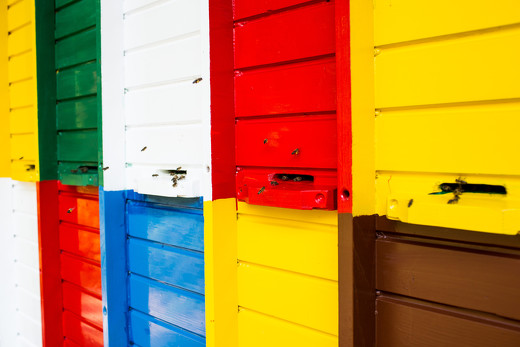
The Gorenjska region is not only known for its numerous natural beauties, but also as the homeland of the autochthonous bee species - Carniolan honey bee, which represents a special kind of Slovenian pride. And this is precisely one of the reasons why Slovenian hardworking bee was given a space also at the Bled castle.
In the beautiful ambient of Bled Castle, besides the restaurant and café, there is also a boutique shop Grajski čebelnjak (Castle beehive), where we offer honey products and souvenirs from Slovenia every weekday.
The Grajski čebelnjak (castle beehive) offers to visitors:
- various honey products of Slovenian providers;
- free guided tastings with more than 20 types of honey;
- handmade and unique souvenirs from Slovenia;
- a unique interior and design that is designed in the form of a hive;
- attractions about Slovenian beekeeping.
All honey products available to visitors of the Castle beehive are the product of Slovenian suppliers. In most cases, they are domestic high-quality products and 100% Slovenian honey.
A wide range of honey products is available to visitors:
- honey, honey with flavours and additives
- honey beverages (honey wine, liqueurs and spirits)
- gingerbread and other confectionery (chocolates, honey lolly pops...)
- dietary supplements (propolis, royal jelly, Apikompleks...)
- Honey cosmetics
- Honey candles
- marmalades
- oils
The Lectar Museum
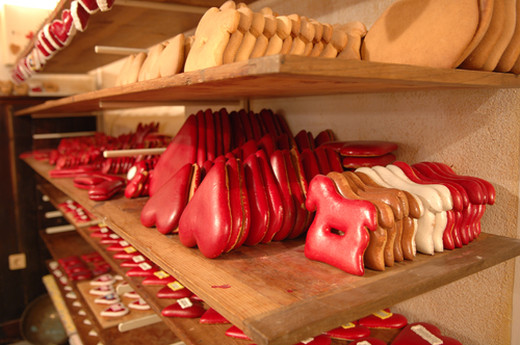
At Lectar's in Radovljica, after two centuries, a Lectar workshop is again in operation, where we produce recognised products of the old Slovenian craft - lectery. The workshop also works in the form of a museum, where you can watch the original production process.
On the medieval market of the Gorenjska town of Radovljica, whose name we first read before 1333, stands more than five hundred years old house, in which Jakob Krivic opened a Lectar workshop, honey bread and candlemaking in 1766. He has experienced a high age of 90 years. Lectarian craft was later taken over by his son, who in 1822 opened the inn in the same house, which still operates today. For a while, both crafts worked in parallel, hence the name of the restaurant Lectar and the symbol of the house - the Lect heart.
Workshop for making gingerbread

Symbolic meaning of Lects.
The red colour of the Lect hearts is supposed to be a symbol of love and passion; the same applies to the heart as a very strong symbol, as it is known worldwide. Yellow ribbon symbolizes infinity, and green with flowers symbolizes growth and development. The mirror on the heart was intended for girls to admire themselves in it...
The course of the production of lects.
The manufacturing process itself is time-consuming, considering all phases, it takes at least a week. The process is interesting because it is done in the old, traditional way, and the girls are dressed in traditional costumes from the second half of the 18th century. Thus, by making the lect in front of the visitors, we take them to the old times, when time was different, and the masters of crafts were valued artists and preservers of folk tradition.
Bled
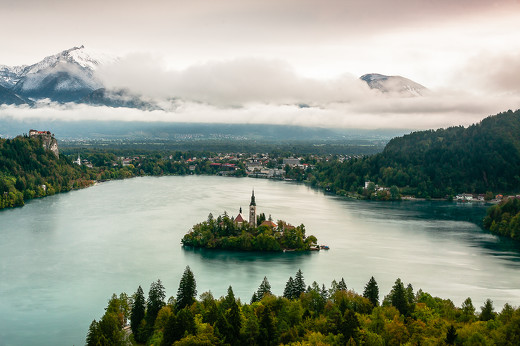
Bled with its surroundings and natural beauty is one of the most beautiful Alpine resorts, characterised by a mild, healing climate and thermal lake water. The beauty of the mountains reflects in the lake, the sun, peace and fresh air arouse the extraordinary pleasant feelings of visitors in every season and provide ideal conditions for a pleasant holiday or an active holiday. Bled attracts business people, artists, athletes, researchers, recreationists, old and young people from all over the world. Bled with its beauty convinces the visitors that they always want to come back.
Basic information
Altitude of 501 m, height of the castle hill 604 m, height of the hill Straža 646 m. Number of inhabitants 5,476. Tourist capacity 4,000 beds. The altitude of the lake is 475 m, the length is 2,120 m, the width is 1,380 m, the area is 144 ha, the maximum depth is 30.6 m, the highest annual temperature of the water is 26 °C.
Healthy water
Thermal springs, which are covered in the three swimming pools of the Grand Hotel Toplice (23 °C) and the Park and Rikli Balance hotels (28 °C - the water is heated), enable successful treatment of managerial diseases, exhaustion, neurological disorders and old age disability.
- H1 Hotel Rikli Balance ****S
- H2 Hotel Park ****
- 3 Happy beehive
- 4 The Soča River
- 5 Soča Trail
- 6 The Trenta Museum
- 7 Triglav National Park
- 8 The Source of the Soča River
- 9 Bled Castle
- 10 Castle beehive
- 11 The Lectar Museum
- 12 Workshop for making gingerbread
- 13 Bled
-
- VIP tour with tourist guide and transportation
- Group trip
-
No. of peopleConfirm
Transfer from the airport
Guests arriving by air will be offered comfortable transfers at competitive prices from close by airports. Our chauffeur will meet you at the arrival and will bring you back safely and on time
to the airport at the departure. You can cancel the transfer from your home to the hotel without expenses within 72 hours prior to scheduled transfer. You will receive the information about the exact time of departure a day before the scheduled transfer.
-
From - to:
-
Distance:km
-
Travel time:h
-
Type of transfer:One-way transfer
-
Price:€ per person
-
Number of people:
-
From - to:
-
Distance:km
-
Travel time:h
-
Type of transfer:Return transfer
-
Price:€ per person
-
Number of people:
Transfer from home to the hotel
Guests from northern Italy are offered the possibility of transport from home to the hotel. You can choose between
morning or afternoon directory term, the carriage is available for 2-7 passengers, reservation up to 5 days prior to departure. The notice of the exact time and location of departure one day prior to the tour.
-
From - to:BENETKE - MORAVSKE TOPLICE
-
Distance:km
-
Travel time:h
-
Type of transfer:One-way transfer
-
Price:€ per person
-
Number of people:
-
From - to:BENETKE - MORAVSKE TOPLICE
-
Distance:550 km
-
Travel time:5,5h
-
Type of transfer:Return transfer
-
Price:€ per person
-
Number of people:
Holidays in Slovenia portal.
You will receive an automatic reservation recapitulation on your e-mail address,
final confirmation will be sent upon payment.
You will receive an update on your reservation within 2 hours; if not, please, call us as soon as possible or send e-mail. Also check SPAM.
Thank you for your confidence and best regards.
HolidaysinSlovenia.eu


